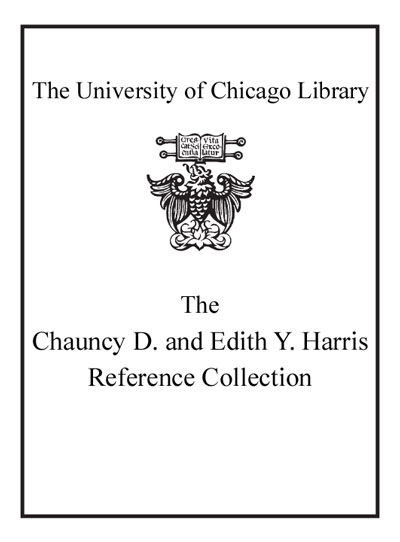Review by Choice Review
Condensed from the full version of this review, CH, Jun'02, p.1727-28.This encyclopedia (IESBS) should be compared with two predecessors, Encyclopedia of the Social Sciences (ESS, 1930-35) and International Encyclopedia of the Social Sciences (IESS, 1968). Published 31 years apart, they established standards for knowledge in social science research and practice. IESBS, appearing after another 33 years, is an important publishing event that organizes and highlights knowledge, theories, and methodologies of a new generation of scholars in the social sciences and related fields.The mission of IESBS is to highlight the integration and interconnectedness of the social sciences with other disciplines. The editors believe the time was right for a work that would reflect "the growth and specialization of knowledge since the 1960s," the interdisciplinarity and internationalization of research, and the increasing interconnectedness of social, behavioral, and biological sciences in the last third of the 20th century. IESBS is a new work in every way--scope, design, content, organization. The design team, 39 scholars mainly from the US and Europe, served as discipline section editors; 86 other scholars made up an advisory board. They chose as core disciplines anthropology, economics, political science, psychology, and sociology. With regard to psychology, emphasis extends beyond ESS or IESS to cover comprehensively research and applied and clinical concepts and practices. IESBS expands coverage of other disciplines--archaeology, demography, education, geography, history, law, linguistics, and philosophy. Recognizing the interdisciplinary nature of the social and behavioral sciences, the design team drew information from intersecting fields (e.g., genetics, neuroscience, gender, religion, technology), from fields that influence research and methodologies (e.g., mathematics, computer science, ethics), and key applications (public policy, cultural issues, commerce).IESBS uses contemporary terminology and discusses issues that received little coverage in IESS; e.g., research emphasizing race, ethnicity, and gender is reported in essays on the core disciplines or on topics like feminist ideology and the sociology and history of racism. Coverage extends to environmental issues; regional studies in geography, government, and society; globalism; genetics; and postmodernism.Biography is not an outstanding feature of IESBS. Initially, the editors hoped to omit biographic essays, favoring concepts and methods, but eventually included 150 deceased persons recognized as founding figures. Authors of the 147 biographical articles focus on the subjects' place in the history of ideas rather than their personal lives and professional work. IES included 4,000 biographical entries, IESS 600. The decreased emphasis of IESBS on biography will disappoint some readers, but indexes refer to a much larger group of personalities than are featured in separate entries.Arranged alphabetically, IESBS avoids the grouping by disciplines that characterized IESS. New specialties are covered, illustrating the directions of research and sharing of ideas across disciplines in the past 30 years. Some related essays appear in close proximity because of the arrangement of entries; e.g., the entries headed "Historiography and Historical Thought" are followed by subheadings (e.g., "Christian Tradition," "Classical Period," "East Asia"). Sets of entries begin with phrases ("Databases, Core ..."; "Statistical Systems ..."; "Neural Plasticity ...") or single words ("Environmental ..."; "Personality ..."; "Community ..."). Access is made difficult by the proximity of unrelated entries, requiring readers to browse for general articles and be alert to complex titles. The complexity and focused themes of articles cause entries to appear in inverted form ("Citizenship, Political"; "Vision, Psychology of"; "Divorce, Sociology of"). This emphasizes the complexity and fragmentation of knowledge often ignored by broad-based subject encyclopedias.ESBS stresses various finding tools for locating essays. Most readers search alphabetical entries to find topics, but if seeking a general overview (e.g., psychoanalysis), will find that the first entry with this headword is not a general article but "Psychoanalysis and Adolescents." They must scan titles beginning "psychoanalysis" or search the index; the location of the entry for "Psychoanalysis, Overview" is not obvious, although "overview" is a subhead in the subject index. An alphabetical list of entry titles at the front of v.1 assists browsing.Readers who find a relevant article should consult both see also references at the end of each entry and v.26, which offers an 816-page subject index and the "Classified List of Entries." IESS included see references in the alphabetical sequence, but IESBS restricts them to the subject index.Librarians encourage readers to use subject indexes of encyclopedias; with IESBS this is especially important. This index uses subjects and subheadings from thesauri in sociology, psychology, and education, as well as reference resources from other fields. The index can be difficult because of inconsistencies in design. Its references to essays on a topic show as page ranges in boldface, but this device is sometimes ignored, as in index entries for the Holocaust and John Dewey. The relatively few biographical essays make the index important as a finding aid. The publishers have reissued the subject index to correct inconsistencies. The extensive name index in v.25 locates authors cited in bibliographies, pages where their works are cited, and names mentioned in essays. Unhappily, this index uses initials instead of first and middle names, and makes no effort to reconcile inconsistencies in names.The scholarly style and apparatus of IESBS are intended for upper-division undergraduates, graduate students, and researchers. Entries end with bibliographies of books, journal articles, and occasionally, Web sites, focusing on publications of the past 25 years.The well-written and authoritative essays define the issue, locate it in its intellectual context, and discuss trends and future directions of theory and research. Scientific, analytical, and theoretical perspectives pervade the writing, implying the complexity of research and practice. Of the 3,842 contributors, 93 percent work in North America and Europe (54 percent in the USA); 21 percent are women.Any review of IESBS needs to consider its price--$9,995 ($384 per volume)--prohibitive to libraries with small budgets. A Web version, expected in late 2002, will be offered free for one year to libraries that purchase the printed version. A unique and valuable encyclopedia for students and researchers in all academic libraries.[Librarians at Ohio State University who contributed to this review: Mel Ankeny, Miriam Conteh-Morgan, Anne Fields, Lynda Hartel, Carole Hinchcliff, Linda Krikos, James Murphy, Charles Popovich, Edward Riedinger, Stephen Rogers, Marian Shemberg, Graham Walden.] D. A. Lincove Ohio State University
Copyright American Library Association, used with permission.
Review by Choice Review


